It seems that artists were inexplicably obsessed with snails in those times. Medieval knights were always fighting them in the margins of gothic manuscripts. And we think it is still a mystery why. Did snails represent something else or these artists were just trolling? Please leave comment if you have any idea.
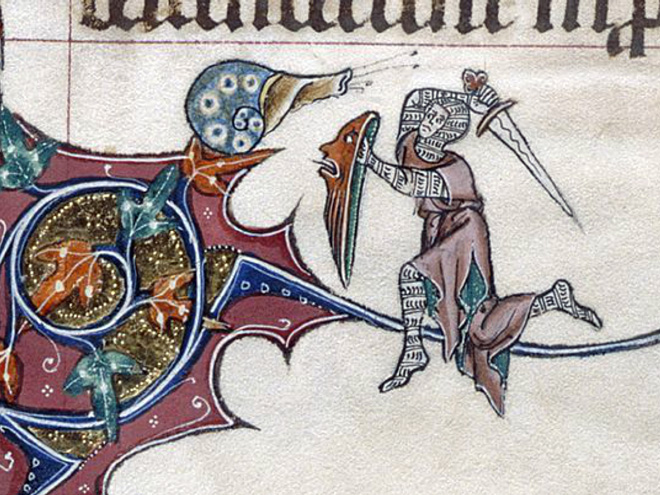

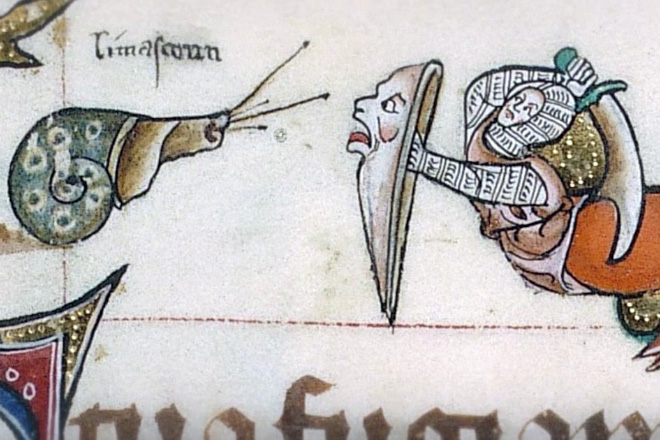

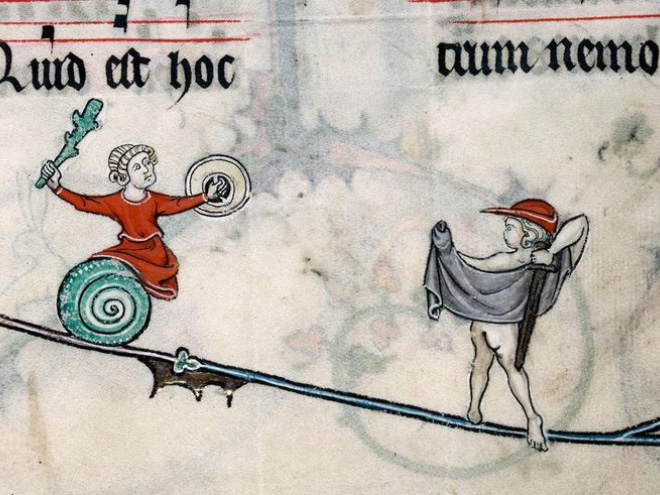
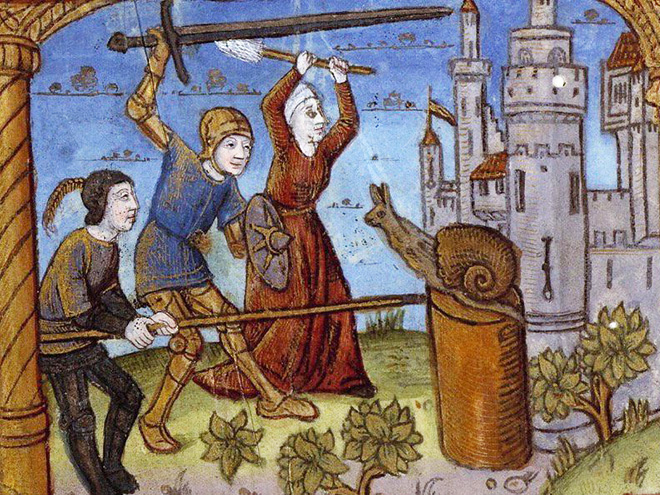
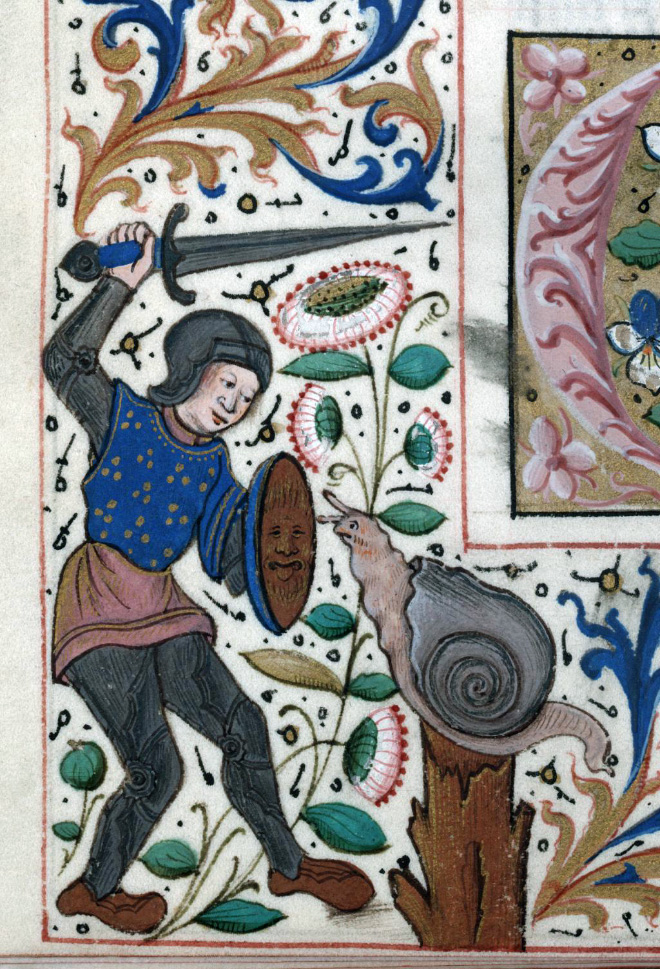



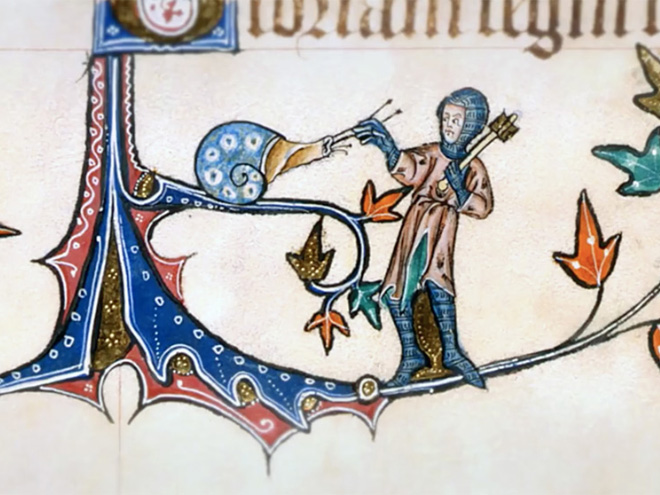

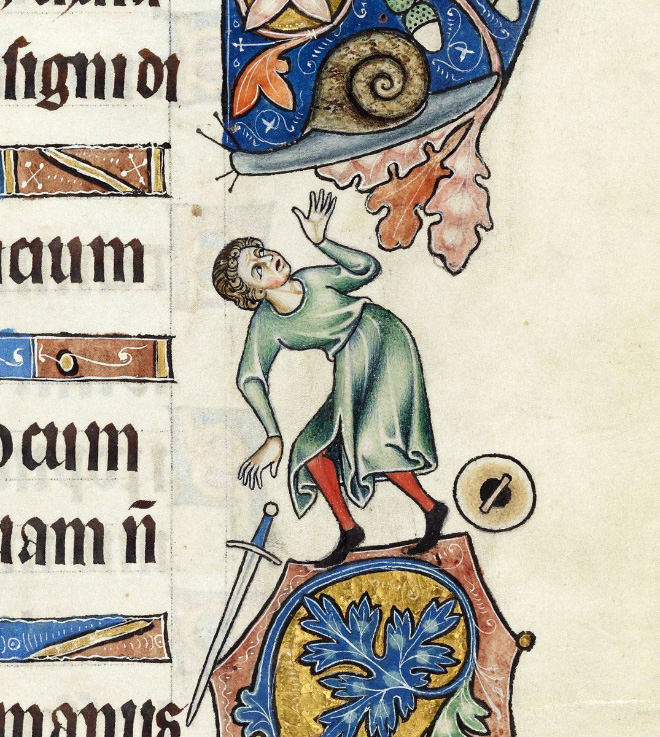










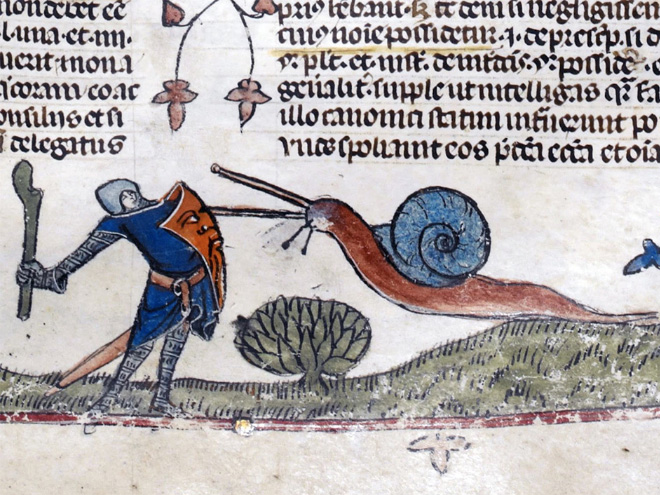
That’s funny, indeed. Althrough there’s a wide symbolism behind the snail figure.
So wide and so boring :-)
Accept this: the snail was used to represent people without “bones” and easy to die like snails are. There were also some sentences in the bible about this but I have no time to google now!
Well, life was much slower, then…
All they needed was some salt
Symbolic of the French – maybe
Man’s eternal struggle with sloth, one of the seven deadly sins.
I’m not accepting that this is even real.
Nobody seems to know why snails, but given the fact that books (mostly the Bible) at the time were written in Latin by scribes literate in Latin and that various words related to the Latin for “snail” are also slang terms for both male and female genitalia, I know where I’d put my money.
Sloth
Psalm 58 in the Bible equates snails with mortality: “Like a snail that melteth away into slime, they shall be taken away; like a dead-born child, they shall not see the sun.“
Amusing! Maybe the garden snail was vicious in it’s raids on the veggie beds and so the battle was symbolic of the all mighty snail who could destroy and devour crops and needed someone to challenge it. Maybe.
A. learned friend says it might symbolize the French, but serious scholars say it might symbolize the Lombards (Germans who ruled part of the Italian peninsula). They were looked down upon as usurers, treasonous, etc.
A learned friend says the snail might represent the French, but that serious scholars say it might represent the Lombards (Germans while ruled part of the Italian peninsula). They were looked down upon as usurers, treasonous, etc.
As an animal that appears and disappears again, the snail is lunar, an image of the constantly increasing or decreasing moon. In this respect it is also a symbol of rebirth and constant renewal. Her house (if any) is mostly beautifully formed and beautifully drawn. Because of its shape it is a natural sign of the labyrinth, the spiral and the cave.
In Christianity it is considered a symbol of resurrection, as it bursts the lid of its case in spring.
The sea snail is an image for the Androgyn, which unites the two principles fire and water. Among the Aztecs it embodied the moon god and stood for pregnancy and birth as well as for creativity. The Maya sign for “zero” is the snail.
Indian wind gods were often portrayed as spirals to express their ability to penetrate to the furthest corners as the snail withdraws into their house. In some Indian cultures it was therefore and because of its protective house a common symbol for conception, pregnancy and birth.
In Egypt, the nudibranch was a symbol of sperm and moisture.
Here there’s some serious people that master the copy/paste process more than the snail savvy.
Well, maybe it was just some middle age meme trend that we don’t know.
You know: what if in 2 or 3 hundred years future people will discover rests of our culture? How they’ll explain rainbow cats, drake’s meme or kermit’s one?
Maybe snails were bigger back then.
Solution: The Snails were Swiss! But they still needed some time to discover these medieval pictures in a Bircher Muesli.
Did any of the cultures ever worship snails?
Soultech, I’m sure that you’re on to something there, there has to be some biblical reference to snails that we’re seen as relevant to the people then, manuscripts and religious/devotional books were written and illustrated by monks.
What’s interesting is how many of the images involve warding the snail off with a shield that has some sort of face painted on it. In some the snail appears transfixed – though in others not…
snails taste good
Just read the “Bestiaiare du Moyen-Age”, by Michel Pastoureau. It’s all explained…..
Monks were gardeners, and it was monks who ran scriptoria. Christianity, even in medieval times, did have a critique of war, and so this may have expressed a subliminal critique of the knight class who were always killing each other, and wishing instead they would do something useful like rid the garden of the scourge of snails.
Maybe they just liked to draw snails…? Boom! Explained!!
Obviously the giant snails are a myth, just like unicorns on those tapestries depicted next to those hilariously drawn lions. But, what is a myth, if not a legend with stretched truth? Perhaps the snails represent a foretelling of a slow, impenetrable doom? Maybe an extra long winter since they’ll both lay waste to vegetation. It’s as if the artist warns, “Winter is coming, did you bring your coat?” or, “…sow your oats?” …..something like that.
amoongus